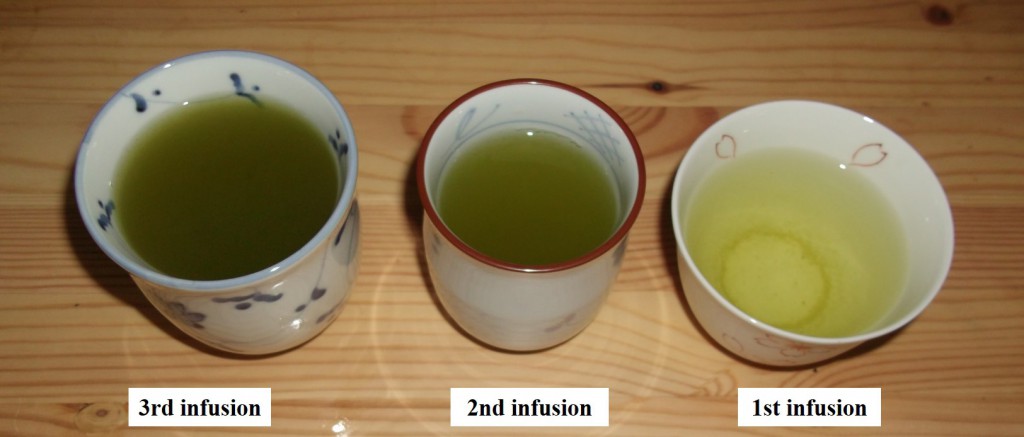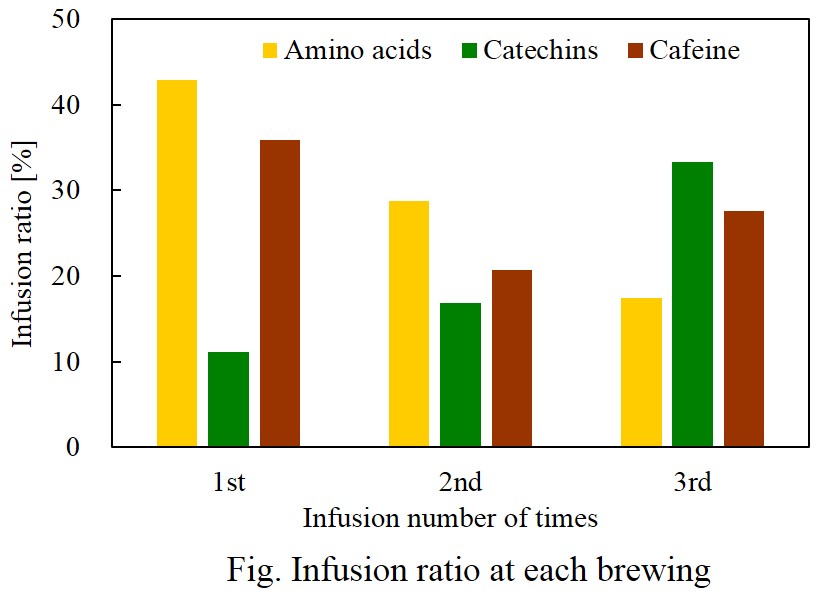Green tea “Sencha” has a potential to be brewed more than three times.
In Japan, it is recommended to infuse green tea at low temperature at first infusion and then re-steep at higher temperature than the previous infusion. An example of water temperature to infuse deep-steamed green tea “fukamushi cha” is shown as follows.
In this condition, extraction behavior of each constituents determining tea taste is shown in the following picture, based on results measured by Sakamoto et al. [089].
The first infusion makes us enjoy umami due to amino acids and delicate taste with fresh aroma. In the case of higher grade one, these flavors keep longer and finish smoothly and more gracefully.
The second infusion has a nice balance of umami with bitterness and astringency. In the case of higher grade one, in some minutes after sipping it, aftertaste can keep longer and change to sweet gradually. In the supposition of the author, this grdual change in aftertaste to sweet would be caused by the conformation change of taste-determining polyelectrolyte such as catechins, tannin, saccharides and their complexes, due to the change in their surrounding chemical conditions such as electrochemical potential and oxidation-reduction potential.
The third infusion has more bitter and astringent taste derived from catechins.
In addition to these taste, we can enjoy the change in infusion color also, especially in case of deep-steamed green tea. Till the third infusion, its color is getting deeper green with the progress of re-steeping.

As just described, we can find expressive faces of green tea by re-steeping.
Furthermore, we can arrange the flavor of green tea by adjusting water temperature and steeping time based on the extraction kinetics of each taste-determining constitution.
In my personal opinion, I prefer longer infusion time at 1st infusion, resulting in more umami and fine aftertaste for me.
Please try various arrangement of infusion conditions as you like!
<Reference>
[089] Sakamoto A., Nakagawa M., Sugiyama H., Horie H. (2002) The compositions of the respective infusions of Sencha brewed three times, Tea Research Journal94:45-55 (in Japanese)


